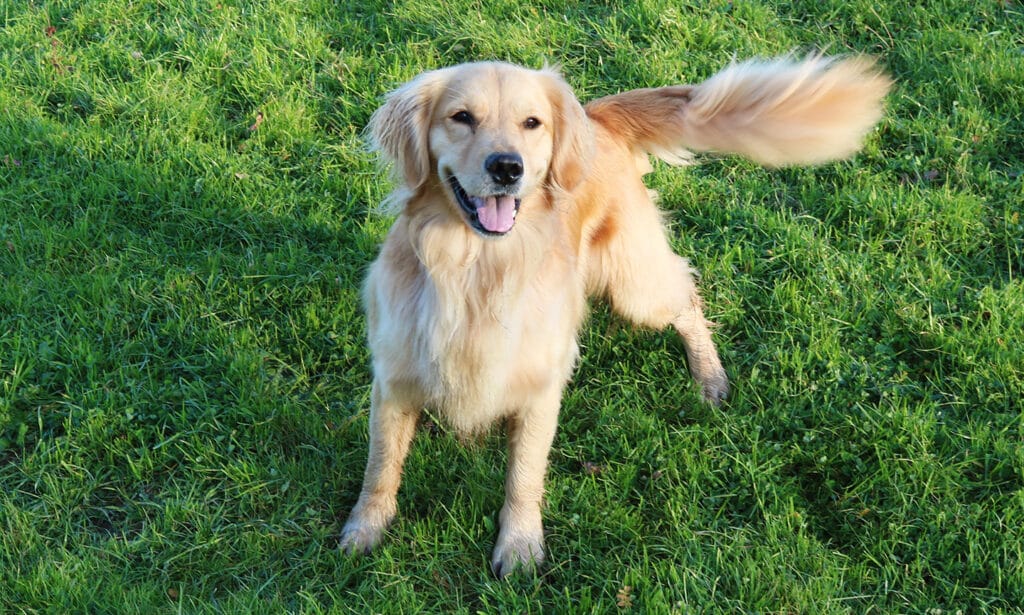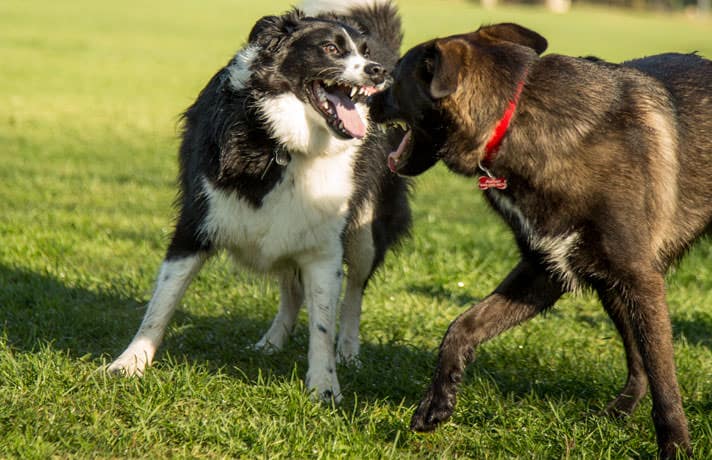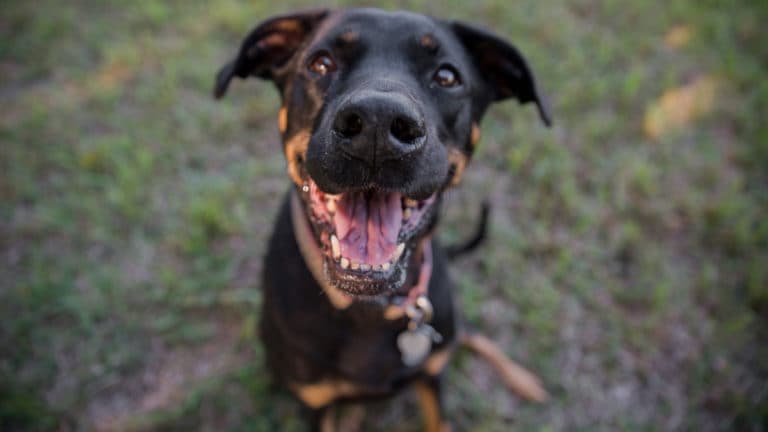When it comes to understanding canine behavior, a dog’s tail often holds the key. Knowing why dogs wag their tail can give you a glimpse into what your pup is thinking—and help you better connect with your furry best friend. But there is no all-encompassing reason for why a dog wags their tail.
“The best way to think of tail wagging is that it indicates a willingness to engage,” says Leslie Sinn, DVM, CPDT-KA, a veterinarian and board-certified veterinary behaviorist in Ashburn, Virginia. And just how the dog wants to engage can be determined by analyzing the way their tail is wagging and other body language signals.
So, what does it mean when a dog wags their tail? Here’s how to decode what your dog’s body language—and that wagging tail—is trying to say.
Why Do Dogs Wag Their Tail?
The short answer: Dogs wag their tail to communicate.
“We know for sure that dogs use tail movements to communicate, both to transmit and decode information from other dogs in a similar way we humans use language,” says veterinarian Paola Cuevas, MVZ.
Just as humans use their voice to express a range of emotions, your dog’s tail serves a similar purpose. Here are seven of the most common reasons why dogs wag their tail.
Your Dog Is Happy
Often, dog tail wagging means your pup is happy!
When your dog greets you at the door or when you offer them their favorite treat, it’s not uncommon to see their tail wagging. The pace can range from steady to speedy, depending on how excited they are. The more positively stimulated your dog is, the faster the tail will wag.
Along with speed, the direction your dog’s tail is wagging also gives you hints into their feelings. “A [right-sided] tail wag is usually an indication of positive emotions,” says Dr. Cuevas. “This kind of tail wagging is controlled by the left-brain hemisphere, which is associated with positive feelings, like feeling content, secure, and happy.”
Your Dog Is Curious
If your dog encounters something that piques their interest, they might wag their tail as they assess the situation. This type of tail-wagging behavior usually comes with a somewhat straight, horizontal tail position and a slower, more deliberate wagging motion.
Other signs that a dog’s tail wagging is rooted in curiosity include a slightly tilted head and ears that are alert and pointing forward.
Your Dog Is Relaxed
When your dog is at ease, they might give you a little tail wag to express their contentment.
Look for the tail to be in a neutral position, with an easy and slow wagging motion. This type of tail wagging behavior indicates that your dog feels comfortable and secure, and it’s usually accompanied by other signs of relaxation—such as a slightly open mouth, relaxed tongue, and squinted eyes.
Your Dog Is Afraid
A dog may wag their tail when afraid or showing submission in what they perceive to be a threatening situation. Keeping in mind that a wagging tail signals a willingness to engage, this type of dog tail wagging might communicate to another dog or person that they are timid or shy as a way to de-escalate the situation and avoid conflict.
When a dog wags their tail due to fear, the movement will be much subtler, and the tail position will be low and often tucked under the body. “The tail movement is stiff, short, and rapid or frozen,” says Dr. Sinn.
Your Dog Is Ready To Play
A dog that is ready to play may use tail wagging to signal they’re interested and available to play with another dog or a favorite human, Dr. Sinn says.
For instance, a dog might bring you a favorite toy, drop it at your feet, and then make eye contact with you while wagging their tail in a friendly manner. They are saying, “I’m ready to play with you!”
If that doesn’t get your attention, your dog might let out a short bark to amplify the message. Wagging their tail in a play bow (head down, rear end up) is another sign that a dog is initiating play.
Your Dog Feels Threatened
Not every tail wag is a sign of friendship. In some instances, a dog wagging their tail might be a warning that they’re on guard. “When they are triggered and about to fight or bite, aggressive dogs might have a straight-up wagging tail,” says Dr. Cuevas.
Aside from the more erect, upright tail position, other signs of aggressive body language in dogs include raised hackles along the back and bared teeth.
Your Dog Is Stressed
Your dog’s surroundings might be causing stress, which can trigger tail wagging. Think of it like the nervous laughter you might experience in an uncomfortable situation—it doesn’t mean you’re happy. The same is true for your dog.
To determine if stress might be the reason why your dog is wagging their tail, pay attention to their body language—is your dog panting, shaking, yawning, lip-licking, or avoiding eye contact? Then consider which way the tail is wagging—is it mainly moving to the left?
“Research suggests that tail wagging to the left side correlates with right brain hemisphere activation, which also indicates negative emotions such as fear, stress, or the need to withdraw,” Dr. Cuevas says.
This combination of factors likely means your dog’s tail wagging is due to stress.
To help ease stressful situations, you may want to consider using a dog calming aid, like a calming supplement or even a chew toy to help distract them.
So, How Do You Know Why Your Dog Is Wagging Their Tail?
Tail wagging is one of the most obvious clues as to how a dog is feeling, but it’s not the only factor to consider.
“Tail wagging just indicates a willingness to engage—it doesn't tell how the dog is willing to engage,” says Dr. Sinn. “The tail wagging needs to be interpreted in context with the situation and with the dog’s other body language [cues].”
Pay attention to other important body language signals, including head position, mouth, eyes, and ears. Additionally, observe other features, like whether the hair along the neck and back is raised and the stance the dog is taking.
Along with those important visual clues, listen to any vocalizations from the dog (including high or low barks, growls, etc.).
Think about the situation, too. This is especially easy to do with your own pet because you know their personality, likes, and dislikes.
- Are the surroundings calm or chaotic?
- Is it unfamiliar territory for your dog?
- Are there new people, animals, or scents?
All of this makes it easier to understand a dog’s tail wagging meaning.
FAQs About Dog Tail-Wagging
Q:Is a dog happy when he wags his tail?
A:While a happy dog may wag their tail, a wagging tail isn’t a universal symbol of happiness. A dog that is stressed or anxious may also wag their tail, so don’t jump to a conclusion based on a single aspect of the dog’s body language.
Q:Why does my dog wag his tail when he sees me?
A:When a dog spots his favorite human, it’s not uncommon for his tail to start wagging. Dr. Cuevas says seeing you puts your pet in a positive emotional state, so the tail wagging is a natural expression of the happiness he’s feeling.
Q:Do dogs have control of their tail?
A:
Dog tail wagging can be either a voluntary or an involuntary behavior, depending on the situation.
“The tail has skeletal muscle in it, meaning it can be controlled voluntarily just like your legs or hands,” Dr. Sinn says. “However, sometimes the motion may also be involuntary in the sense that the dog may not be aware that they are wagging, just like a person smiling or frowning.”
Share:











